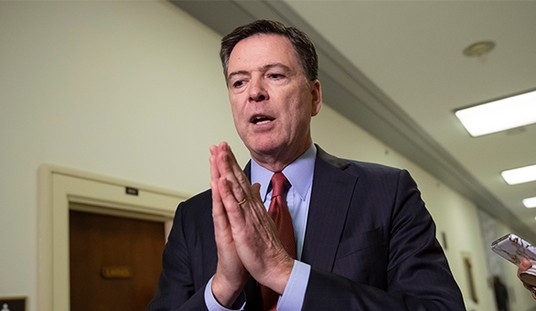Los Angeles drivers, sweating and steaming, stuck in bumper-to-bumper traffic thanks to a late-night accident, will glance to their left and see a totally open lane. Not a car or truck on it for miles.
Oh, they might see the occasional Prius, or maybe a Chevy Volt packed with enviro-friendly carpooling passengers.
But other than that, nothing but the occasional empty potato chip bag blowing down the highway or an empty Budweiser can bouncing along the pavement. No cars. No trucks. No motorcycles.
So why don’t the gridlocked L.A. drivers know enough to move to the left and get into that empty lane, beating the traffic congestion and unlocking the gridlock?
They would love to, but they can’t. State law prevents them from getting into the left lane of the freeway, which is officially the HOV or high-occupancy vehicle lane. It’s all about California Gov. Jerry Brown’s (D) resolve, which rivals any barnstorming preacher worried about more souls in Heaven and more nickels in his collection plate, to defeat global warming.
Brown was an early advocate of HOV lanes. He should really be considered a pioneer. Back in 1976, during his first stint as California’s chief executive — back when he dated the singer Linda Ronstadt — Brown came up with the idea of what were dubbed Diamond Lanes.
The California Department of Transportation blocked some lanes of one of Los Angeles’ busiest traffic arteries, the 10 Freeway, to anything but carpooling vehicles and their passengers.
Even though that set of a storm of criticism from his fellow politicians and people stuck in sudden traffic jams on the 10, Brown stuck to his guns.
“The world’s resources are limited,” Brown told Dan Walters, a columnist with the Daily Bulletin in 1976.
“There is a second law of thermodynamics that cannot be repealed. Energy growth cannot be at the same rapid rate as it has been in the past. Resources are being depleted,” Brown added. “The air and the water are finite and unless we can learn to live within the limits then we’re in for severe social and biological conflict and deterioration.”
Sound familiar?
Well, that was then, this is now. And, it is not like Southern California legislators have not tried to work with Brown as they try to do their best for traffic-jammed constituents, and California’s environment.
L.A. Assemblyman Mike Gatto (D) has tried not once, but twice, to get the HOV lanes of Southern California’s freeways open to drivers behind the wheels of internal-combustion powered vehicles. He has even tried to placate Gov. Brown’s desire to be Greenpeace-friendly.
Gatto has only tried to get those empty HOV lanes open to single-passenger, gasoline-burning cars, trucks and motorcycles during off-peak hours, outside morning and afternoon rush hours.
His proposal would have only applied to two sections of two of L.A. busiest freeways, the 210 from Pasadena to Glendora and the 134 from North Hollywood to Pasadena, and other freeways in Los Angeles County deemed appropriate by Caltrans, the California Department of Transportation.
Gatto said you can’t understand the frustration of drivers traffic-jammed on those freeways, with an empty lane to the left, unless you have been traffic-jammed on those freeways with an empty lane to the left.
“It’s happened to anyone who lives in Southern California. A late-night accident or mysterious slowing clogs the rightmost freeway lanes, while the carpool lane sits empty,” said Gatto.
As if the wound of not being allowed to move into an empty lane while stuck in traffic in Southern California wasn’t bad enough, here’s some salt to rub into it. Northern California drivers can get into HOV or carpool lanes after 6 p.m.
Evidently, Brown and his compatriots haven’t been stuck in one of those off-hour, late-night gridlocks in Southern California.
Both times that enough of Gatto’s colleagues have agreed with him to move the bill to Brown’s desk — in 2013 and most recently in the just-completed portion of the 2015 legislative session — Brown has refused to sign the legislation.
“I continue to believe that carpool lanes are especially important in Los Angeles County to reduce pollution and maximize the use of freeways. Therefore we should continue to retain the current 24/7 carpool lane control,” Brown wrote in his latest veto message on Sept. 28.
Gatto, an L.A. resident, said he has been stuck in enough off-hour, late-night traffic jams on Southern California freeways to realize the failure of Brown’s argument.
To begin with, Gatto cites studies from Caltrans that show it is not just an urban legend; the carpool or HOV lanes on the 134 and 210 freeways are virtually empty, or at least under-utilized, after 6 p.m.
“Carpool lanes are intended to increase the capacities of our freeways, reward those who carpool during rush hour, and protect the surrounding environment from harmful exhaust,” Gatto said after his first attempt to open the HOV lanes was squashed by Brown.
“When motorists are stuck in bumper-to-bumper traffic at midnight while carpool lanes sit empty, none of those goals are being met.”









Join the conversation as a VIP Member